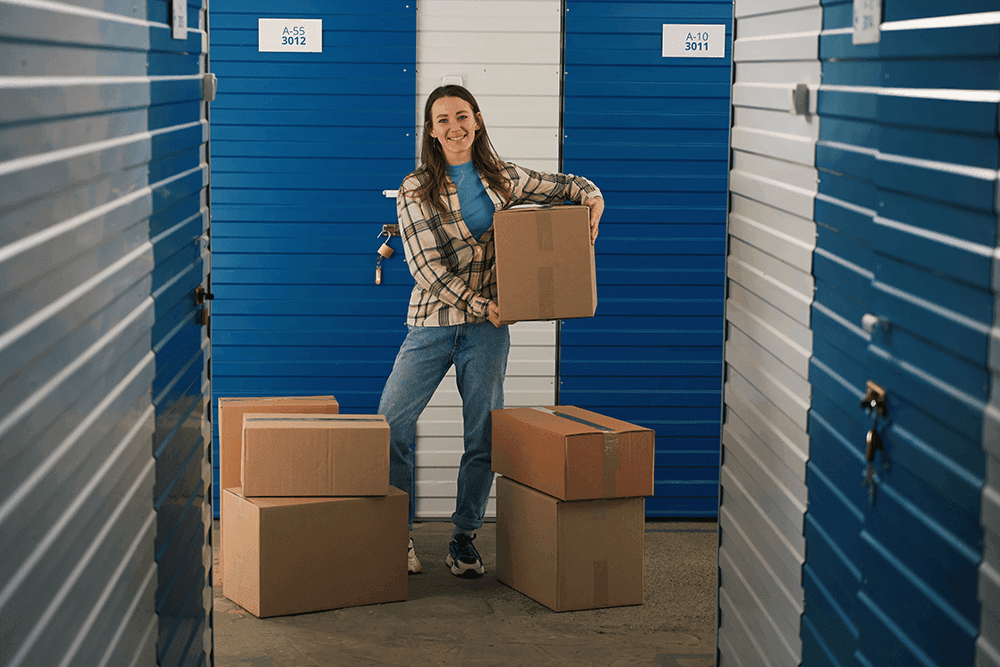
 Home
HomeStaying Safe and Preparing for a Hurricane
States along the Atlantic Coast and bordering the Gulf of Mexico have long been hit by hurricanes. Like clockwork, the US gets hit by about 12 or more named storms every year. That breaks down to 9 hurricanes and three big, nasty ones. This mess makes it challenging for folks in many areas to snag affordable insurance for their stuff. And Florida? Well, it draws the short straw, getting slammed by most of these storms.
Out of the 467 hurricanes that have battered America since weather trackers have recorded them, 120 have clobbered Florida, with plenty more giving the state a nasty sideswipe. Even though it's called the "Sunshine State," about 40% of all US hurricanes have messed with it. Around a fifth of the hurricanes that crash into Florida are Category 3, which means they're seriously bad news.
The top ten states affected the most by hurricanes and the number of historical storms:
The top ten states affected the most by hurricanes and the number of historical storms:
- Florida - 120
- Texas - 64
- Louisiana - 62
- North Carolina -58
- South Carolina - 31
- Alabama - 23
- Georgia - 21
- New York - 15
- Mississippi - 14
- Virginia - 13
Preparing for a Hurricane
Preparing for a hurricane should start well before you receive an evacuation notice.
Things you can do well in advance of a storm include removing any trees that may fall on your home if uprooted. If you can’t remove trees, such as those in your neighbor’s yard, consider installing tree catchers that are strong metal beam supports that will stop a falling tree before it hits your house.
You may have to work with an engineer to determine the height, positioning, and load-bearing capacity of the steel beams. The idea is to prevent a falling tree from damaging your house. After a tree falls, you have a mess to clean up, but it is preferable to have your house still intact.
One excellent source that tracks hurricane formation off the coast of Africa, all the way until each tropical storm system hits the USA, is Mr. Weatherman on YouTube. He starts talking about the formation of these systems, weeks before they hit the USA and gives plenty of warning to those who need to be prepared.
1. How to Create an Emergency Plan
Your emergency plan should include two types of responses: hunkering down (also called “shelter in place”) and having an alternative plan when evacuation is necessary.
The shelter in place method allows you to have more supplies. Be sure to store your supplies in the highest part of your home, so if the home is flooded, they will remain dry and usable.
2. Assembling a Hurricane Emergency Kit
Both shelter-in-place plans and evacuation plans require a hurricane emergency kit.
Here are the CDC and FEMA recommendations:
- Drinkable water - one gallon per person per day (3-day supply for evacuation, 2-week supply for shelter in place)
- Non-perishable food - easy-to-prepare items (3-day supply for evacuation, 2-week supply for shelter in place)
- Battery-powered or hand-crank radio (NOAA Weather Radio, if possible)
- Cell phone with charger
- Copies of personal documents (medication list and pertinent medical information, proof of address, deed/lease to home, passports, birth certificates, insurance policies)
- Extra batteries
- Extra cash (ATMs might be inoperable)
- Extra fuel for a generator and your car
- Family and emergency contact information
- First aid kit
- Flashlight
- Medications (seven-day supply) and medical-care items
- Multipurpose tool, like a Swiss Army knife
- Sanitation and personal hygiene items
If you have a baby or pets, add baby supplies (baby food, diapers, and baby blanket) and pet supplies (pet food, bowls, leashes, and pet cages).
Additional supplies might include towels, plastic sheeting, duct tape, scissors, and work gloves.
If you are sheltering in place, we recommend having more than the minimum amount of food, water, and medicines because it may take weeks for things to return to normal and for any water to completely recede.
3. Securing Your Home Before a Hurricane
Two important steps are to place protective covers over all windows and use sandbags to slow the entry of water into your house. The best protective covers are strong metal window guards that can be lowered to cover all windows fully.
As an alternative to metal window guards, you can cover your windows with strong plywood. Don’t make the mistake of thinking you can buy plywood after a hurricane warning is issued. It is one of the first things to disappear from the hardware stores. You need to be prepared with plywood that is cut to the correct sizes for every window of your home in advance.
4. Evacuation Tips and Routes
Try to determine alternative routes to a pre-selected evacuation location. Many make the mistake of waiting too long to leave, and when there is only one way out, such as in the Florida Keys, the highway quickly becomes blocked with traffic. You are not making a wise choice to be stuck on a beach highway road when the hurricane hits.
If there is a way to get to your destination without using the main roads, make a printed map of any alternatives to help you get away from danger and leave early.
5. Safeguarding Important Documents and Valuables
Looting may be a problem and your home may become a target if evacuation plans take you away from your home. It is preferable to have a safe storage place far from the chances of storm damage, including what might happen with the flooding of your home from storm surge.
Many find it comforting to have already a storage unit on the other side of town, away from the beach, which will protect their documents and valuables if evacuation is necessary. If you are monitoring the weather properly, you will have plenty of time to take your most important things to the storage facility before the storm hits. Use this convenient locator to find a storage facility.
During the Hurricane
The most important thing is to stay calm and feel confident you can handle the storm until it passes. To increase your chances, be prepared in advance.
1. Staying Informed: Monitoring Weather Updates
During a hurricane, when you lose power, you may not have access to regular media sources, so you should have a battery-powered or hand-crank NOAA Weather Radio. The NOAA will continue to broadcast important weather updates even during the storm.
2. Shelter-in-Place: What to Do If You Can’t Evacuate
If you prepared in advance, you should already have plenty of supplies. If not, you may find yourself fighting over the last remaining items in stores that have the shelves cleared.
Move everything you can from the lower stories to the upper stories in homes that have more than one story.
Get your valuable electronics like TVs and stereos as high up from any flooding water as possible so they will not be ruined.
3. Keeping Safe Indoors During a Hurricane
Make sure you are in part of your home that will allow an escape if the flooding water suddenly rises. The weight of the water may make a door impossible to open. You will have to crawl out a window. Be prepared with the tools you may need to use, such as a hammer to knock out a plywood window cover, to escape a house that is partially underwater.
You may be forced to evacuate if the water from the storm surge rises. It is common for first responders to find people stranded on top of their home’s roof with their home underwater.
Glass windows that are not covered are very dangerous if they break. Stay away from them.
4. Communicating with Family and Friends
The mobile phone system is overloaded in the case of natural emergencies. The call volume goes up significantly. The only advice we have is to keep trying until you eventually get through. Set up a call chain in advance so all you must do is call one person (outside the emergency zone) and they will place calls to other friends and family members on your emergency call chain, to inform them that you are OK.
5. Managing Anxiety and Stress During the Storm
If you are prone to anxiety, surviving a hurricane may be very stressful. Stress levels go up if you have young children and babies. Play games with the kids to reduce stress.
After the Hurricane
Just because the storm passes, the danger does not go away. Trees may still fall, and downed power lines create a significant risk of electrocution.
1. Safety Precautions When Returning Home
If you return home before the water recedes, you must have protective gear to enter the water, like waterproof fishing waders that come up to your hips above the water line. The water flooding the streets is completely contaminated and dangerous to enter without protection. It is filled with raw sewage.
2. Assessing and Reporting Damage
Contact your insurance carrier as soon as you can to get your insurance claim started. Be prepared to pay the amount of your deductible before any insurance coverage will kick in. Also, be aware that insurance companies treat hurricane insurance and flood damage from storm surges differently. If your home is flooded, you will need to have a separate insurance policy for flood coverage to make a claim. It is better to figure out the extent of your coverage before a disaster hits and know that there is a waiting period (usually 30 days) before any coverage can be put in place. Read your policy terms very carefully.
3. Cleaning Up Safely After a Hurricane
If you have proper insurance, the insurance company will assist you in hiring a professional to do the cleanup work. You will want to move all your things that you are able to salvage, perhaps take them to your storage unit while the cleanup and renovation work is done.
4. Accessing Emergency Relief and Aid
Once the President declares a national emergency, FEMA is the federal government agency that provides aid in the case of hurricanes. State aid also may be available. Churches and nonprofits may also be helpful for those displaced by the storm.
5. Rebuilding and Recovering After a Disaster
Recovery and rebuilding after a hurricane are challenging. The severity of hurricanes is increasing. Many people, especially in Florida, are not able to afford the high cost of insurance. If you must make a claim, it is likely that your insurance premiums will go up. You may want to consider moving away from the coastal areas and putting your things in storage until you find a new place located on higher, drier ground.



